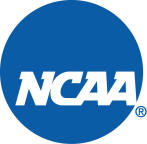|
|
|
|
|
For a PDF version of this article, click here. Passing on Test: Lawsuit's Effect Felt with NCAA Change on SATs RICH HOFMANN The lawsuit began in 1997 with two names and ended with four: Tai Kwan Cureton, Leatrice Shaw, Andrea Gardner and Alex Wesby. It began with a simple premise: They were discriminated against by the NCAA and its reliance on an SAT cutoff score as the way for determining freshman eligibility in college sports. And 5 years later, they won - even though their names don't get mentioned in any NCAA press releases, even though you don't hear about them in all the high-minded talk about new research on the question and whatnot. Cureton, Shaw, Gardner and Wesby: They won. They killed the SAT cutoff, the almighty test score that squashed the dreams of too many kids in this country, too many black kids, for too many years. "I don't know if the NCAA will ever admit it, but I think that's what happened," said André Dennis, the Philadelphia attorney who argued the case for Cureton and the rest. "I think the truth is that the NCAA doesn't respond to anything but pressure and litigation." It was announced last week that the NCAA Division I Board of Directors passed a package of reforms. A lot of it has to do with increasing the amount of academic progress that an athlete has to make during his college career in order to stay eligible, especially in the first 2 years. But the big news was that the use of the SAT as a cutoff was dead. Instead, there is now a greater emphasis on an athlete's grades in high school core courses. Even a kid who gets every question on the SAT wrong can theoretically gain eligibility as a freshman if he has a high enough average in those high school core courses. The rules go into effect in August 2003. In other words, it has taken 20 years for the NCAA to come around to a position that the people who administer the tests, such as the Educational Testing Service (ETS), have argued from the very beginning: Using the SAT as a cutoff is a misuse of the test. The NCAA knew it from the very beginning - the letters from the ETS have been in the public record forever. It was reminded, at high decibels, for two decades; why do you think Temple coach John Chaney always sounds hoarse? It knew it was wrong and it knew it disproportionately affected black kids - it was all right there in its own data, all right there for years, right there in black-and-white in its own publication, the NCAA News. Yet the almighty SAT barrier stood - until Cureton, Shaw, Gardner and Wesby, until the lawsuit. "That was the catalyst," said Adele Kimmel, a staff attorney for the Trial Lawyers for Public Justice, which also worked on the case. "That's what got the NCAA moving in the proper direction. I'm just sorry it took as long as it did." The lawsuit endured a bumpy existence. A victory at the district-court level was overturned on appeal on procedural grounds. But the reasoning in the lower-court opinion was still out there, unchallenged by the appeals court. That opinion stated that the use of the SAT discriminated against black kids and did nothing to improve the NCAA's overall graduation rates. And that's what made the NCAA move - nothing else. The NCAA doesn't trumpet any of this in the press releases, but in an April 2002 position paper before the NCAA Management Council, the lawsuit is mentioned prominently. The paper gives three reasons for getting rid of the SAT cutoff:
Which is just what it did last week. "I still don't think they went far enough," Dennis said. "It comes up short because the rule still takes a one-size-fits-all approach. They still refuse to look at students as individuals. They still refuse to recognize that there are different missions and academic curricula at different schools. They continue to exclude students who can compete and can perform well academically." Here's one example: Under the new rules, an athlete will be limited to 6 semester hours in remedial, tutorial or noncredit course work. But if an accredited university decides that its mission is to educate everybody, and if its rules allow for more than 6 hours of remedial work, why should the NCAA be interfering? It's a small point, but it's the kind of stuff the NCAA does all the time. The reason is simple. As Dennis said, "The NCAA doesn't trust its members. That's what it all comes down to." That was true in 1983, when all this SAT stuff started, and it's still true today. Because school presidents couldn't police their athletic departments, arbitrary rules were put in that denied opportunities to kids on the margins, mostly black kids. Thousands were affected. "What about those who lost scholarship opportunities?" Dennis said. "What about all of those were made to question their own self-worth because of this? What is the NCAA going to do for them now?" Is it at least going to apologize? |
|

